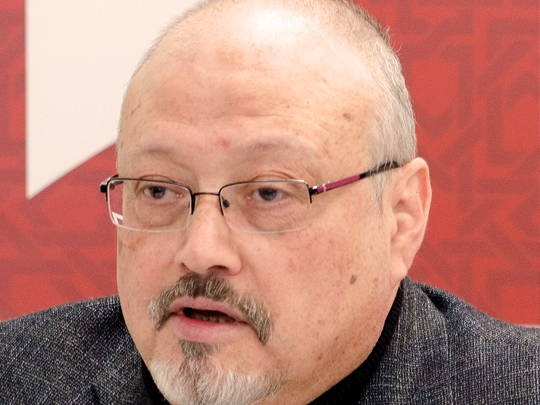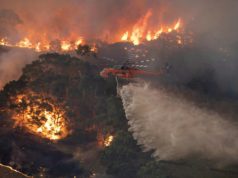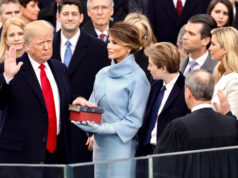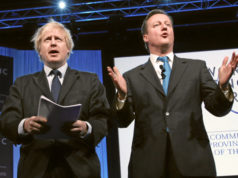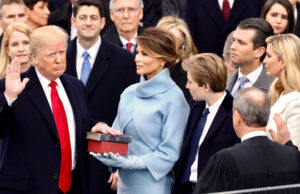Photo by April Brady / Wikimedia Commons / CC-BY-SA-3.0 / GFDL
1 – Jamal Khashoggi Murder
The assassination of Jamal Khashoggi, a Saudi journalist for The Washington Post, occurred on 2 October 2018 at the Saudi consulate in Istanbul, Turkey. It was carried out by agents of the Saudi Arabian government.
Khashoggi had been critical of the Saudi government, the crown prince, Mohammad bin Salman, King Salman, and also opposed Saudi intervention in Yemen. He had visited the consulate to obtain documents needed for his upcoming marriage to his Turkish fiancée.
Security camera footage shows Khashoggi entering the building, but there is no footage of him leaving the building again. He was declared a missing person, with news reports claiming he had been assassinated and dismembered inside the consulate.
When his disappearance was first reported, Saudi Arabia claimed he had left the consulate and denied having any knowledge about his fate.
However, after Turkish media published evidence suggesting that Khashoggi never left the consulate, the Saudis denied any involvement in his disappearance.
Saudi Arabia was placed under considerable economic and political pressure from the international community to disclose the facts, leading to an inspection of the consulate by Saudi and Turkish police on 15 October.
Turkish prosecutors found evidence of tampering during the inspection and evidence supporting the theory that Khashoggi had been killed.
The Saudi government changed its position eighteen days later, admitting that Khashoggi died inside the consulate due to strangulation after an argument and fistfight.
Subsequently, 18 Saudis were arrested by Saudi authorities, including the team of 15 operatives which a Saudi official claimed had been sent to confront Khashoggi.
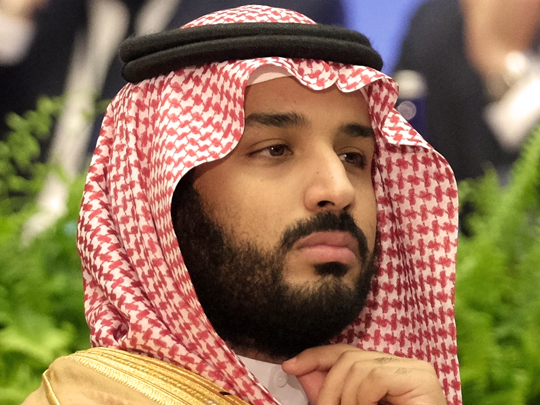
On 19 October, the Saudi prosecutor stated the Saudi-Turkey joint team of investigators found evidence indicating the suspects acted with premeditated intent. The Saudi Royal family denied ordering or sanctioning the killing.
On 31 October, Istanbul’s chief prosecutor released a statement stating that Khashoggi had been strangled as soon as he entered the consulate building before his body was dismembered and disposed of.
Turkish officials released an audio recording of Khashoggi’s killing, which they alleged contained evidence that Khashoggi had been assassinated on the orders of the Saudi Crown Prince Mohammed bin Salman.
In November, the CIA concluded Mohammed bin Salman had ordered Khashoggi’s assassination. Amazingly, US President Donald Trump disputed the CIA assessment and stated the investigation into Khashoggi’s death had to continue.
On 15 November, Saudi prosecutors said 11 Saudi nationals had been indicted and charged with murdering Khashoggi, with five of them could face the death penalty.
It alleged that Khashoggi was bound shortly after entering the Saudi Consulate and then injected with a fatal sedative overdose. His body was dismembered and given to a local collaborator for disposal.
Saudi officials continued to deny that the Saudi Royal Family was involved in, ordered, or sanctioned the killing.
In December 2018, Khashoggi was named as a person of the year by Time magazine for his work in journalism, along with other journalists who faced political persecution for their work.
2 – U.S. President Trump and Kim Jong Un Summit
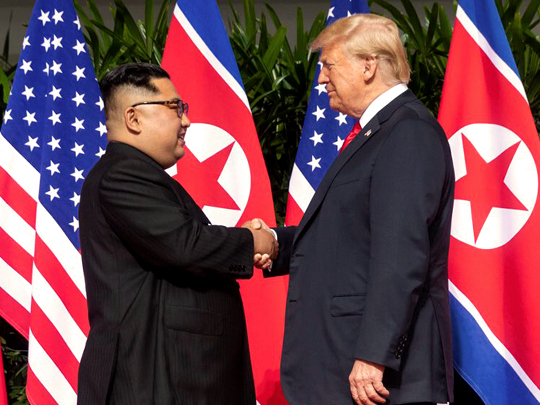
The Singapore Summit was a historic first-ever meeting between the leaders of North Korea and the United States on 12 June 2018.
The meeting between North Korean Chairman Kim Jong-un and U.S. President Donald Trump, took place at the Capella Hotel, on Sentosa Island, Singapore.
They signed a joint statement, agreeing to security guarantees for North Korea, new peaceful relations, the denuclearization of the Korean Peninsula, the recovery of soldiers’ remains, and follow-up negotiations.
Following the summit, President Trump announced the U.S.military would discontinue joint military exercises with South Korea, and stated he wished to bring Korean-stationed U.S. soldiers back home at some point.
On 1 August 2018, the U.S. Senate passed the military budget bill for 2019, forbidding funding the reduction of active personnel below 22,000. Large-scale removal of U.S. forces is considered non-negotiable in denuclearization talks.
A second meeting was held between Trump and Kim in February 2019 in Hanoi, Vietnam.
The summit was preceded by a period of heightened tensions on the Korean peninsula, including long-range missile tests. De-escalation began when Kim Jong-un announced his desire to send athletes to the Winter Olympics in South Korea in February 2018.
Kim then proposed talks leading to an inter-Korean summit. High-level exchanges with the U.S. and North Korea followed. CIA Director Mike Pompeo visited Pyongyang and Kim Yong-chol, Vice Chairman of the Workers’ Party of Korea, visited the White House.
The inter-Korean summit between Moon Jae-in, President of South Korea, and Kim Jong-un, Supreme Leader of North Korea took place on 27 April 2018, on the South Korean side of the Joint Security Area.
This was the first inter-Korean summit in eleven years. It was the first time since the end of the Korean War in 1953 that a North Korean leader had entered the South’s territory. President Moon also briefly crossed into the North’s territory.
3 – The Thailand Cave Rescue
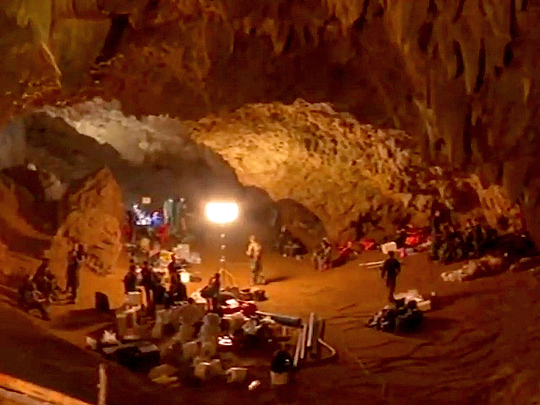
On 23 June 2018, 12 members of the ‘Wild Boars’ junior football team, and their 25-year-old coach entered the Tham Luang Nang Non cave after football practice. Continuous heavy rainfall then partially flooded the cave, trapping the group inside.
The Tham Luang Nang Non is a cave complex in Chiang Rai Province, Thailand, beneath Doi Nang Non, a mountain range on the border between Thailand and Myanmar. The system is 10 kilometers (6.2 mi) long.
Efforts to locate the boys, all aged between 11 and 16, were hampered by rising water levels and strong currents. Amid intense worldwide attention, the rescue effort expanded to involve international rescue teams.
On 2 July, British divers John Volanthen and Richard Stanton found the group alive on an elevated rock about 4 kilometers (2.5 mi) from the cave mouth.
Rescue organizers discussed numerous options for saving the group, including teaching them basic diving skills, to wait until a new entrance was found or drilled, or wait months for the floodwaters to subside at the end of the monsoon season.
After days of pumping water from the cave system and a respite from the rain, rescue teams hastened to get everyone out before the next monsoon rain, which was predicted to start around 11 July.
Between 8 and 10 July, all of the boys and their coach were rescued from the cave by an international team.
The rescue effort involved over 10,000 people, including more than 100 divers, rescue workers, representatives from about 100 governmental agencies, 900 police officers, 2,000 soldiers.
The operation also required 10 police helicopters, 7 police ambulances, more than 700 diving cylinders, and the pumping of over a billion liters of water out of the caves.
Tragically, Saman Kunan, a 37-year-old former Thai Navy SEAL was the only fatality. He died of asphyxiation on 6 July while returning to a staging base in the cave after delivering supplies of air.
4 – Parkland School Shooting
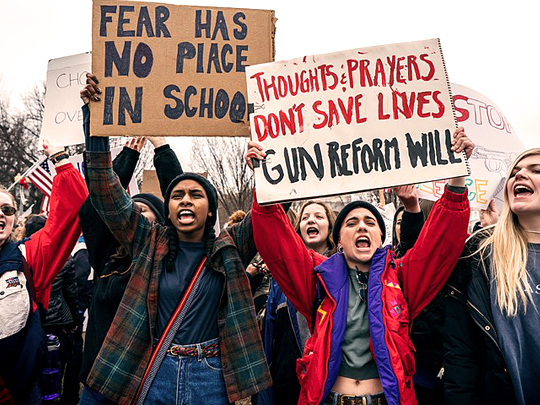
On 14 February 2018, a gunman killed 17 people and injured 17 others with a semi-automatic rifle at Marjory Stoneman Douglas High School in Parkland, Florida. The massacre is the deadliest high school shooting in U.S. history.
The shooting lasted six minutes before the gunman, Nikolas Cruz, a nineteen-year-old expelled student, fled the scene on foot by blending in with other students. He was arrested an hour later in nearby Coral Springs.
In 2016 and 2017, the sheriff’s office received a number of tips about Cruz’s threats to carry out a school shooting. In January 2018, the FBI tip line was contacted that Cruz had made a death threat, but the complaint was not forwarded to the local FBI office.
Following the massacre, the students founded Never Again MSD, an advocacy group lobbying for legislative action on gun violence.
On March 9, Governor Rick Scott signed a bill that raised the minimum age for buying rifles in Florida from 18 to 21. The legislation also established waiting periods, background checks for gun buyers, and the banning of bump stocks.
After the shooting, Broward County police officers were also criticized for staying outside the school and not immediately confronting Cruz, with a number of officers who responded to the scene later resigning.
The March for Our Lives took place in Washington, D.C. on 24 March 2018, with over 880 similar events throughout the United States and around the world.
The march was a Parkland student-led demonstration, planned by Never Again MSD, in support of legislation to prevent gun violence in the United States.
Turnout across the U.S. was estimated to be as many as 2 million people, making it one of the largest protests in American history.
In March 2019, shortly after the first anniversary of the shooting, two Parkland survivors committed suicide. One was a former student who graduated the year before, and the other was still a student at the school.
5 – Facebook’s Cambridge Analytica Scandal
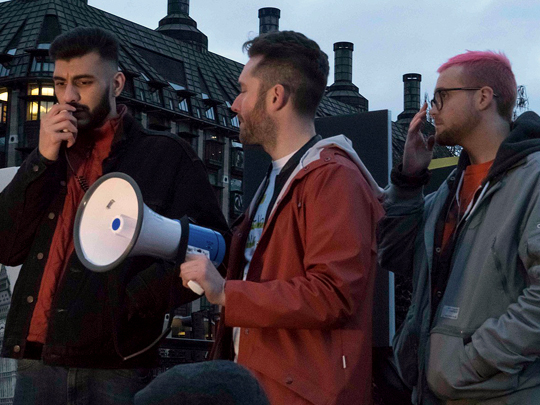
On 17 March 2018, The Observer, The Guardian, and The New York Times revealed Cambridge Analytica had harvested the personal data of millions of people’s Facebook profiles without consent and used it for political advertising purposes.
It was a major political scandal, described as a watershed moment in the public understanding of personal data. The story led to over $100 billion knocked off Facebook’s stock price and calls for tighter regulation of tech companies’ use of personal data.
The unlawful harvesting of personal data was first reported in December 2015 in The Guardian. It was reported Cambridge Analytica was working for U.S. Senator Ted Cruz, using data from millions of people’s Facebook accounts.
Further similar reports followed sporadically during 2016 and 2017, but Facebook refused to comment on the claims in any of the articles.
The scandal finally erupted with the emergence of ex-Cambridge Analytica employee Christopher Wylie as a whistle-blower. He had previously been an anonymous source for an article in The Observer by British journalist Carole Cadwalladr in 2017.
In the wake of the scandal, politicians in the US and UK demanded answers from Facebook CEO Mark Zuckerberg, leading to him agreeing to testify in front of the United States Congress.
In July 2019, the Federal Trade Commission voted to approve fining Facebook around $5 billion to finally settle the investigation to the scandal.
Netflix released a documentary film about the Cambridge Analytica hacking scandal called The Great Hack on 24 July 2019.
6 – Theresa May Strikes a Brexit Deal
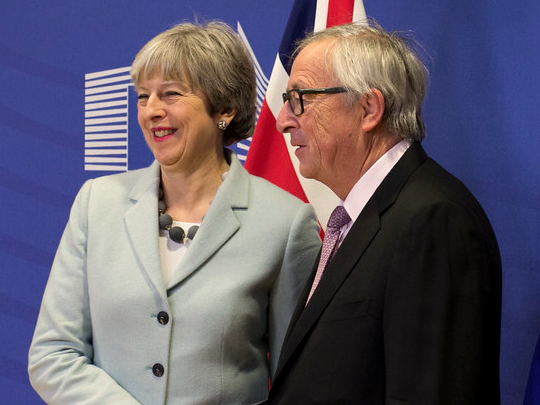
The negotiating period for Brexit began on 29 March 2017 after the United Kingdom served the withdrawal notice under Article 50. In November 2018, the Draft Withdrawal Agreement, negotiated between the UK Government and the EU, was published.
However, the British House of Commons voted against the agreement by a margin of 432 to 202, the largest parliamentary defeat in history for a sitting UK government, on 15 January 2019.
The agreement failed to pass again on 12 March with a vote of 391 to 242 against the agreement. On 14 March 2019, the House of Commons voted for the Prime Minister, to ask the EU for such an extension of the period allowed for the negotiation.
Members from across the House of Commons rejected the agreement, with the leadership of the Labour Party stating any deal must maintain a customs union and single market.
A majority of the Conservative Party members rejected the provision of the so-called Irish backstop in the EU withdrawal agreement. Opponents of the EU Withdrawal Agreement also expressed fears it could plunge Northern Ireland into a return of conflict.
The overwhelming consensus among economists is that Brexit will reduce the UK’s per capita income in the medium term and long term.
Studies on effects since the referendum show a reduction in GDP, trade, and investment, as well as household losses from increased inflation. It is also likely to reduce immigration from European Economic Area countries to the UK.
As of August 2019, the terms of Brexit and the future relationship of the UK and the EU remains uncertain, with a “No Deal” Brexit looking more likely.
7 – The Leicester City Helicopter Crash
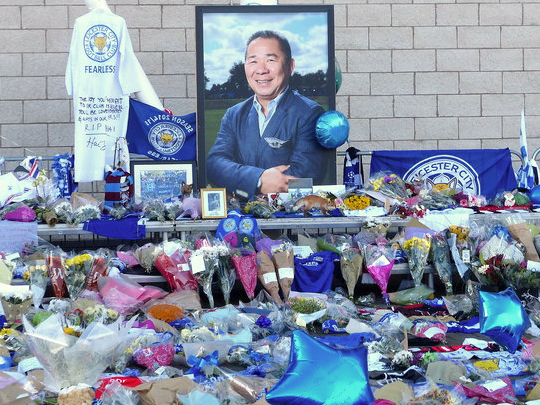
On 27 October 2018, a helicopter belonging to Leicester City’s owner crashed shortly after take-off from the King Power Stadium, the home ground of Leicester City Football Club in England.
The helicopter took off from the center circle of the pitch following a premier league game, flying for a brief period before dropping suddenly to the ground. It landed in a car park a short distance from the stadium, before bursting into flames.
Two police officers attempted to rescue those in the helicopter but had to retreat due to the heat of the flames.
The pilot and four passengers on board, including Leicester City’s Thai owner Vichai Srivaddhanaprabha, were tragically killed.
Numerous tributes were laid to Vichai outside the King Power Stadium by players and fans of Leicester City and other clubs. Vichai’s son, Aiyawatt, took over as Chairman of the club following his father’s death.
The Air Accidents Investigation Branch revealed the helicopter’s loss of control resulted from the tail rotor actuator control shaft becoming disconnected from the actuator lever mechanism that transmits the pilots’ pedal inputs to control the helicopter’s yaw.
8 – Larry Nassar is Sentenced
The USA Gymnastics (USAG) sex abuse scandal involves the sexual abuse of female athletes, primarily as minors, over two decades.
More than 365 individuals were sexually assaulted by officials and staff working for gymnastics programs across the U.S.
USAG team doctor Larry Nassar was a particularly prolific abuser, being named in hundreds of lawsuits filed by athletes. They said that Nassar sexually abused them under the pretense of providing medical treatment for at least 14 years.
The scandal broke in September 2016, with more than 265 women, including Olympic medalists McKayla Maroney, Aly Raisman, Gabby Douglas, Simone Biles, and Alyssa Baumann subsequently accusing Nassar of sexually assaulting them.
In July 2017, Nassar pleaded guilty to federal child pornography charges and was sentenced to 60 years. In November 2017, he pleaded guilty to seven charges of first-degree sexual assault, entering another guilty plea a week later.
In January 2018, Nassar was sentenced to an additional 40 to 175 years in prison, after his 60-year federal prison sentence for child pornography has been served.
On 5 February 2018, Nassar received another 40 to 125 years. The state prison sentences are to run consecutively to the federal sentence. He was incarcerated in the United States Penitentiary, Coleman, in Florida.
USAG and Michigan State University, where Nassar worked, were accused of enabling Nassar’s abuse and are named as defendants in civil lawsuits that former gymnasts have filed against Nassar.
On 16 May 2018, it was announced that the Michigan State University and Nassar victims had reached a $500 million settlement.
Aside from Nassar, numerous other coaches in states such as Michigan, Pennsylvania, California, Rhode Island, and Indiana were involved in the scandal. It is one of the biggest sexual abuse scandals in sports history.
9 – Shooting at Tree of Life Synagogue in Pittsburgh
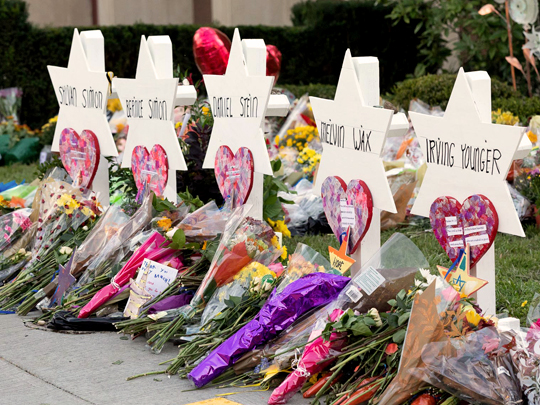
The Pittsburgh synagogue shooting was a mass shooting at the Tree of Life in the Squirrel Hill neighborhood of Pittsburgh, Pennsylvania, on 27 October 2018, while Shabbat morning services were being held.
There were approximately 75 people inside the building at the time when the shooting began at around 9:50 am.
Police arrived at the synagogue within ten minutes and exchanged fire with the gunman. During the subsequent exchange of gunfire, two SWAT members were wounded, one critically.
Shortly after 11 am, the gunman crawled out wounded from the room he had been hiding in and surrendered.
Eleven people were killed, while another six were injured. It was the deadliest attack on the Jewish community in the United States.
The shooter, 46-year-old Robert Gregory Bowers, was arrested and charged with 63 federal crimes, including some capital crimes. He pleaded not guilty.
Bowers had previously posted anti-Semitic comments and referred to Central American migrant caravans and immigrants online.
On 31 October 2018, Bowers was indicted on 44 counts by the federal grand jury. The charges carry a maximum penalty of death or 535 years in federal prison. He was later indicted on an additional 19 counts, 13 of which were for hate crimes.
Over $6 million was raised for the survivors of the Pittsburgh synagogue shooting, the families of those who died, and police officers.
10 – Thousand Oaks Shooting
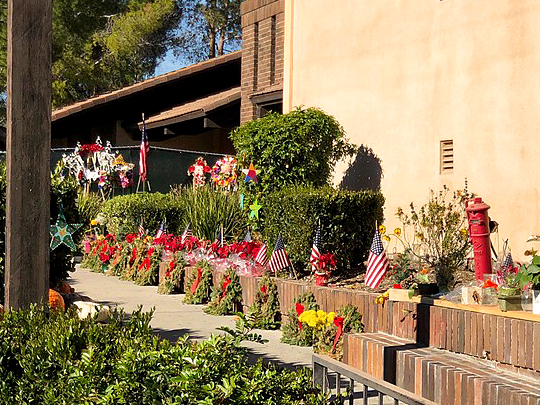
A mass shooting took place in the Borderline Bar and Grill in Thousand Oaks, California, the United States on 7 November 2018.
There were over 200 people inside the Borderline Bar, which was hosting a regularly scheduled College Country Night event.
13 people were killed, including the shooter, while twelve others were injured. A police officer was shot multiple times but was fatally wounded accidentally by another officer.
The shooter was identified as 28-year-old Ian David Long, a United States Marine Corps veteran.
The shooting started around 11:20 pm when a security guard standing outside the building was shot. The gunman then went inside, firing approx. 60 rounds and also throwing smoke bombs.
During the shooting, Long made a number of posts on Instagram. When officers entered the building, Long was found dead in the kitchen area from a self-inflicted gunshot wound.
Among the dead was a 27-year-old Navy veteran who was also at the Las Vegas shooting in 2017.
A total of $3.6 million was fundraised by more than 25,000 people. The funds were distributed to victims’ families, patrons who were injured, and who survived the attack.


